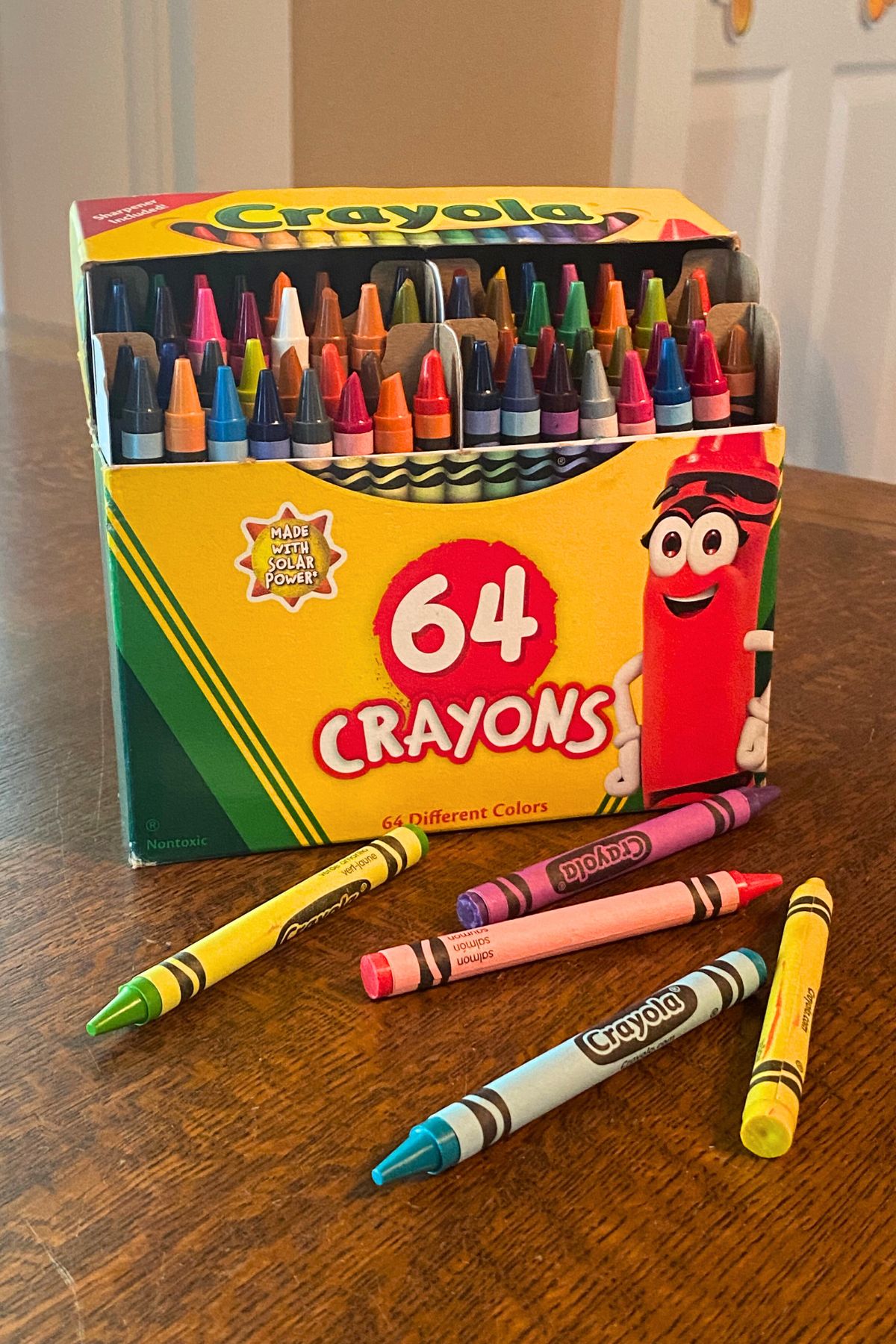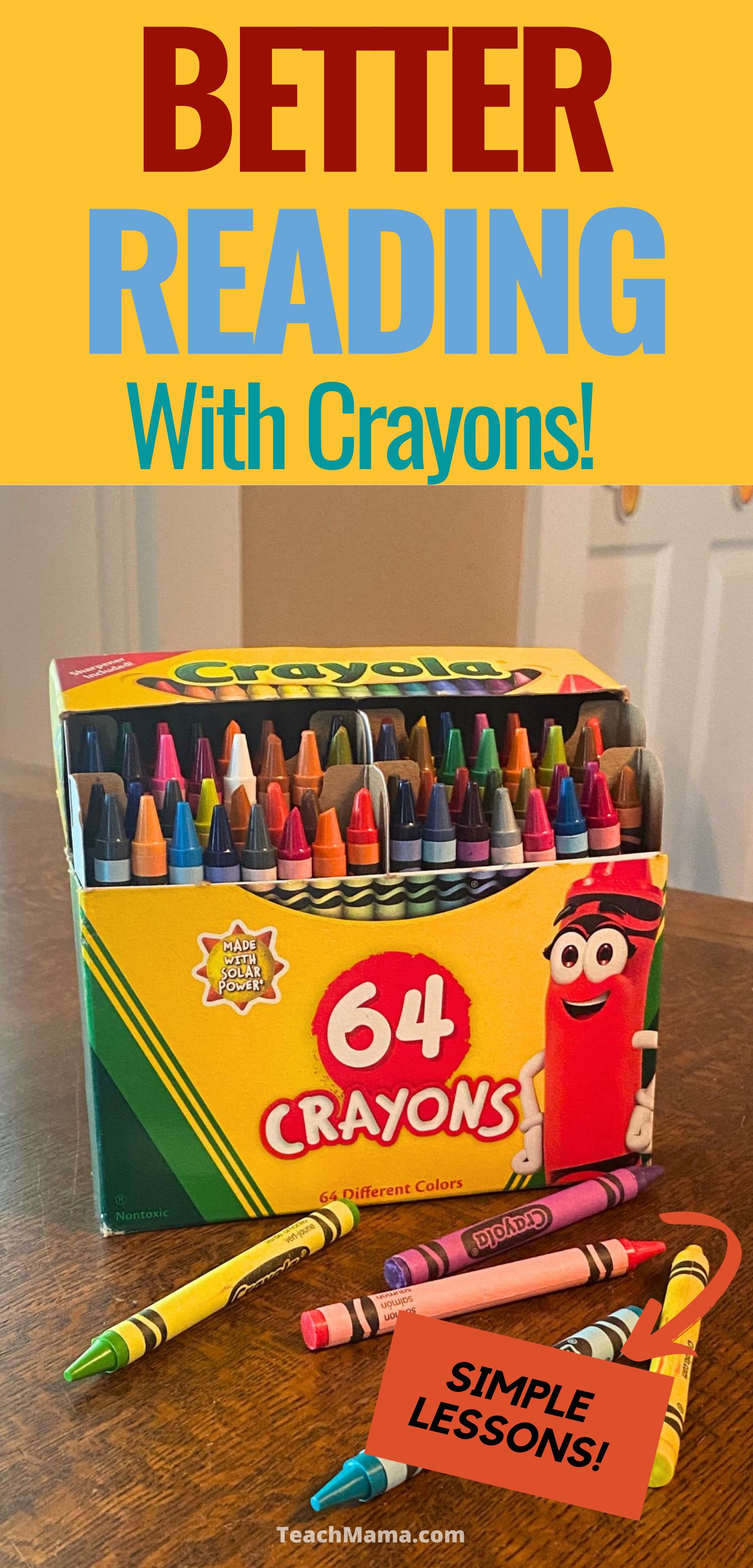Learning to read is one of the most important milestones in a child’s life, and as parents or educators, we want to make that process as engaging and enjoyable as possible. One of the simplest yet most effective tools you can use to teach early reader skills is something you likely already have at home—crayons!

Crayons aren’t just for coloring; they can be a powerful resource for teaching reading skills in a fun, hands-on way. In this post, I’ll share how you can use crayons to enhance your child’s reading journey, drawing from my own experiences as a homeschool mom.
Using Crayons to Help Teach Reading Skills to Early Readers
Why Crayons Are Perfect for Early Readers
Crayons are more than just colorful sticks of wax. They are tactile, easy to hold, and come in a variety of vibrant colors that naturally draw children’s attention. The act of holding a crayon and applying it to paper helps develop fine motor skills, which are crucial for writing. But beyond that, crayons can make learning to read an interactive and creative experience.
Tip 1: Color-Coding Words for Visual Learning
One of the first things you can do with crayons is to color-code words. Children often struggle with recognizing different parts of a word, especially in the early stages of reading. By using crayons, you can help them visually separate letters, sounds, and syllables.
For example, if you’re teaching your child to read the word “cat,” you can have them write the word with a crayon. Then, use a different color to underline the “c,” “a,” and “t” separately. This method not only reinforces the individual sounds each letter makes but also helps them see how those sounds come together to form a word.
My son, for instance, loved using red for consonants and blue for vowels. It was a simple system, but it worked wonders in helping him recognize and remember different sounds.
Tip 2: Making Sight Words Stick with Crayon Art
Sight words are a cornerstone of early reading. These are common words like “the,” “and,” or “is” that children need to recognize by sight rather than by sounding them out. Crayons can be a fantastic way to help these words stick in your child’s memory.
One activity we enjoyed was creating “sight word art.” I would write a sight word on a piece of paper, and then my son would use crayons to decorate around the word. He’d draw pictures that related to the word or just color the letters in fun, creative ways. The key was repetition—each time he saw the word, it became more familiar, and associating it with something fun made it easier to remember.
Tip 3: Building Vocabulary with a Crayon Word Wall
A word wall is another great way to use crayons to build reading skills. Choose a wall or a section of a wall in your home, and dedicate it to words your child is learning. Write each word on a piece of paper with a crayon, and let your child help you put it up on the wall.
To make it even more engaging, you can color-code the words based on categories like nouns, verbs, or adjectives, or even by difficulty level. Every time your child learns a new word, they can add it to the wall. Over time, they’ll have a visual representation of all the words they’ve mastered.
In our home, we had a “rainbow word wall,” where each category of words was a different color of the rainbow. It was a simple idea, but it brought so much joy and pride to my son as he saw his vocabulary grow.
Tip 4: Encouraging Creativity Through Crayon Storytelling
Reading and storytelling go hand-in-hand. Encouraging your child to tell their own stories using crayons can be a powerful way to develop their reading skills. Give them a simple prompt, like “draw a picture of a dog going on an adventure,” and then ask them to tell you the story behind the picture.
As they describe the picture, write down their words using crayons, allowing them to see the connection between spoken and written language. You can even work together to add labels or captions to their drawings, reinforcing the words they’re learning.
When my son was younger, we created an entire book of “crayon stories,” each page featuring one of his drawings and a short story he dictated to me. It was a wonderful way to blend creativity with reading practice.
The Bottom Line
Using crayons to teach reading skills is a simple, affordable, and effective method that makes learning to read a creative and enjoyable experience. By incorporating crayons into your early reading activities, you can help your child develop a love for reading while also strengthening their understanding of letters, sounds, and words.
Remember, the goal isn’t just to teach your child to read, but to help them fall in love with reading. Crayons, with their endless possibilities for fun and creativity, can play a big role in that journey. So grab a box of crayons, and let the learning begin!
Other Ways to Help and Encourage Young Readers:
- Important Early Literacy Terms That Every Parent Needs to Know
- Tips for Helping Early Readers
- Reading Assessments for Reading Success
PIN THIS FOR LATER


yay!!! i made it to the blog!
dang! Soooooo jealous!!